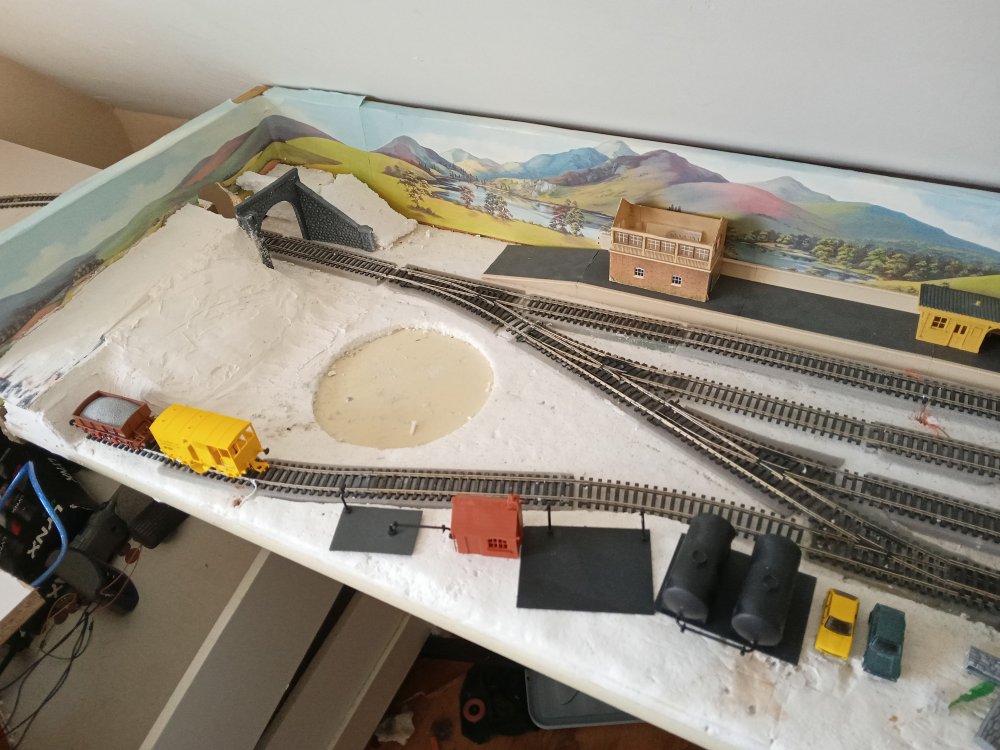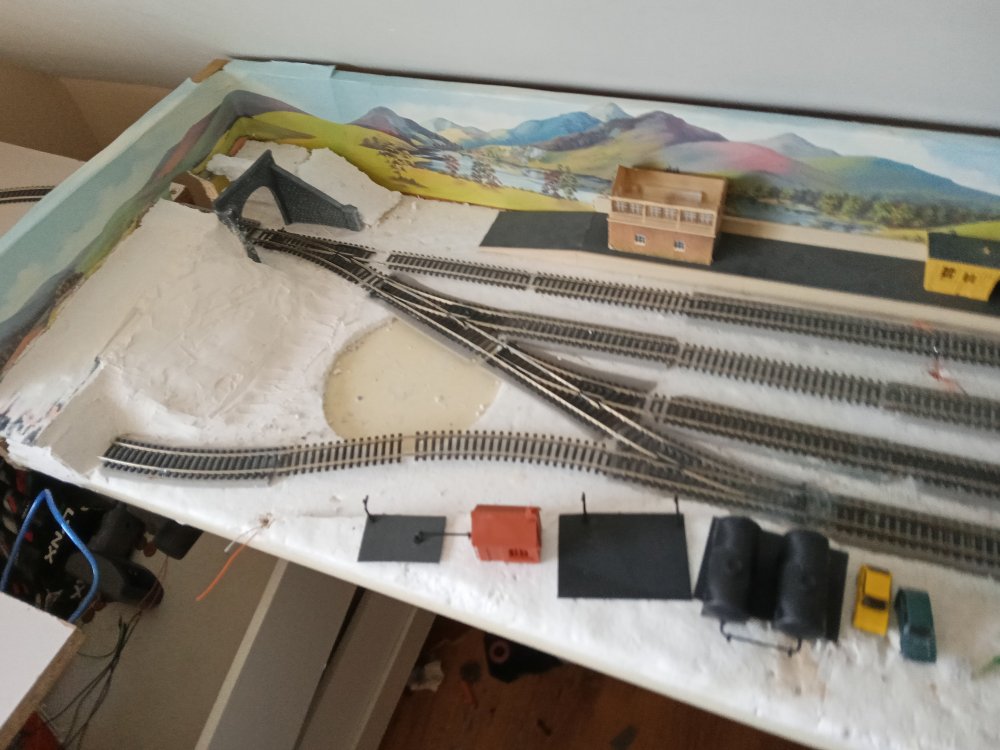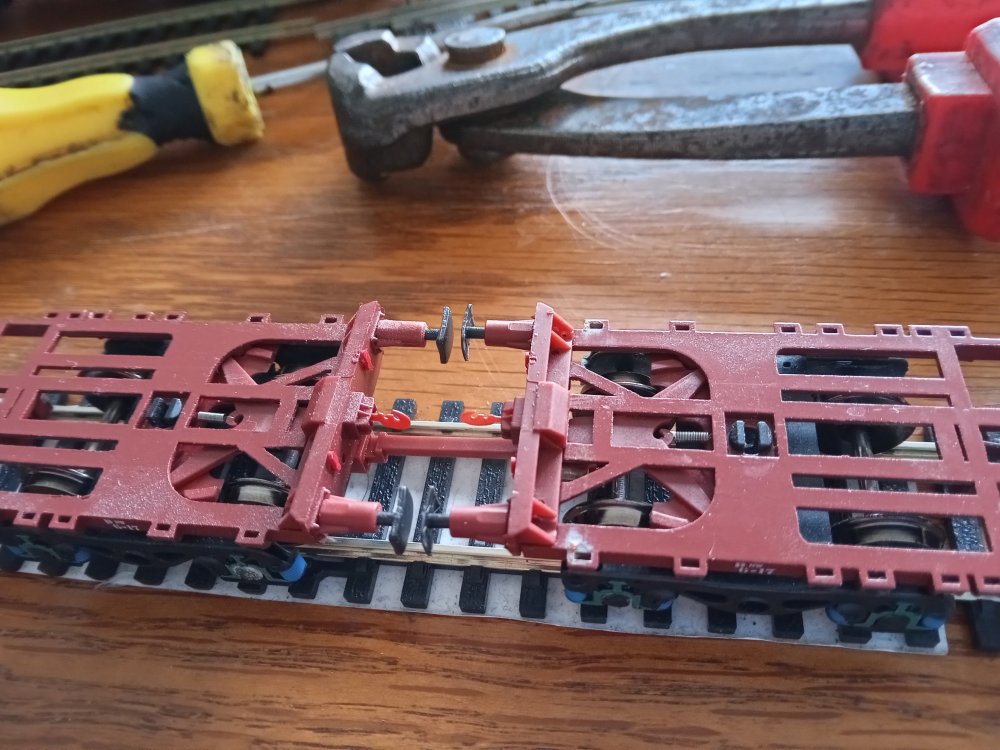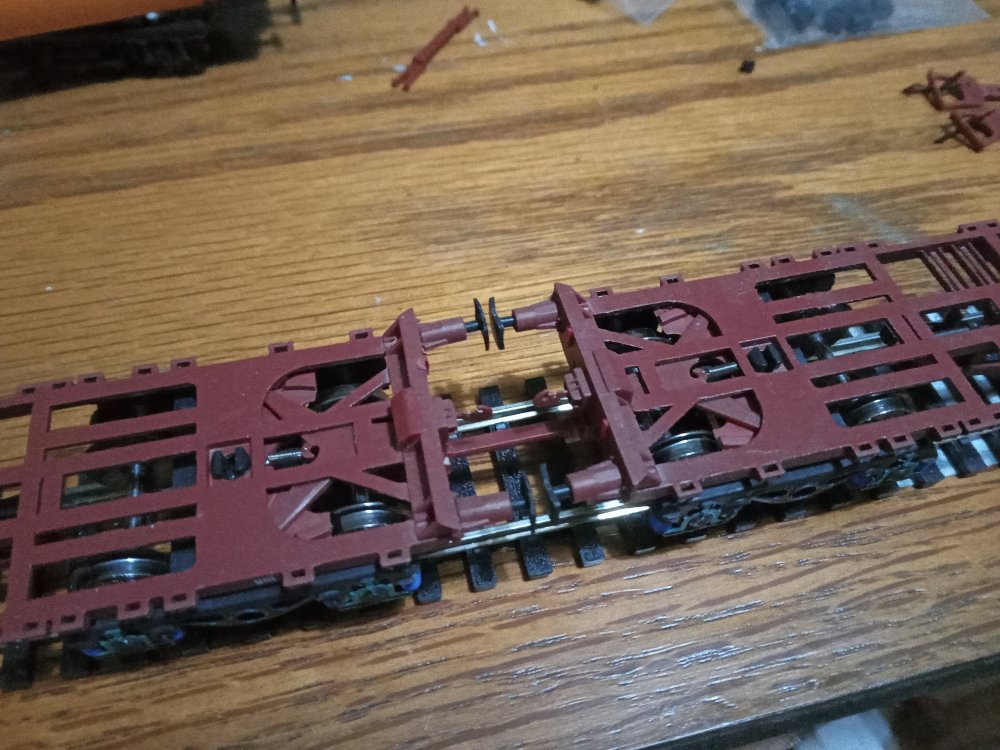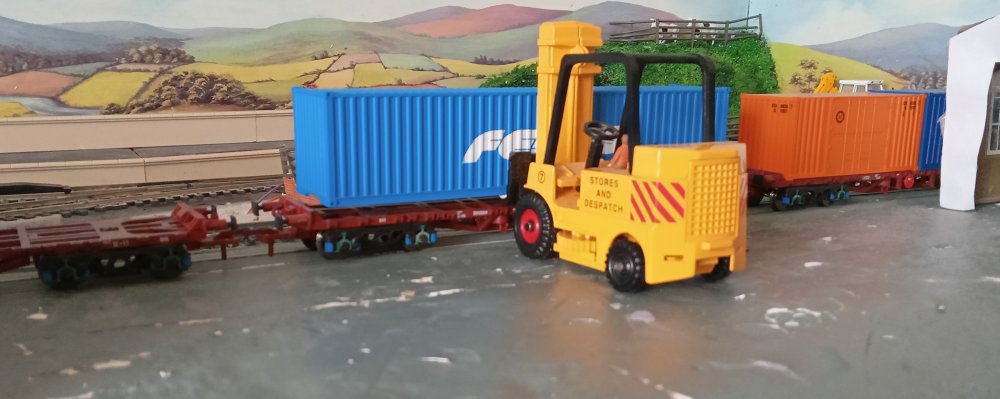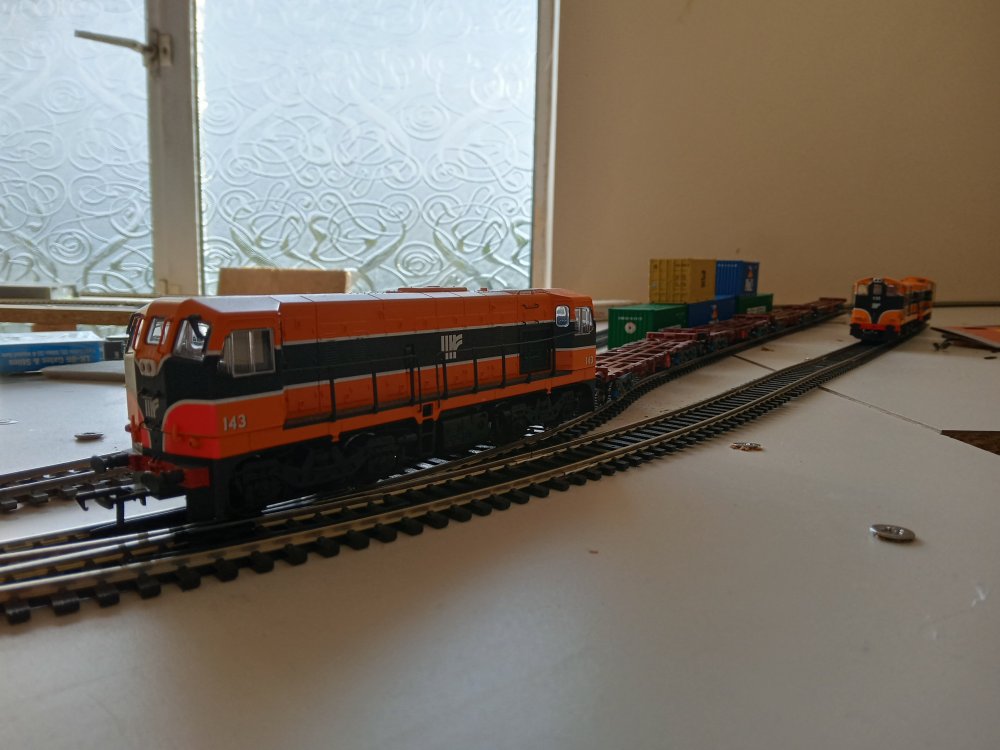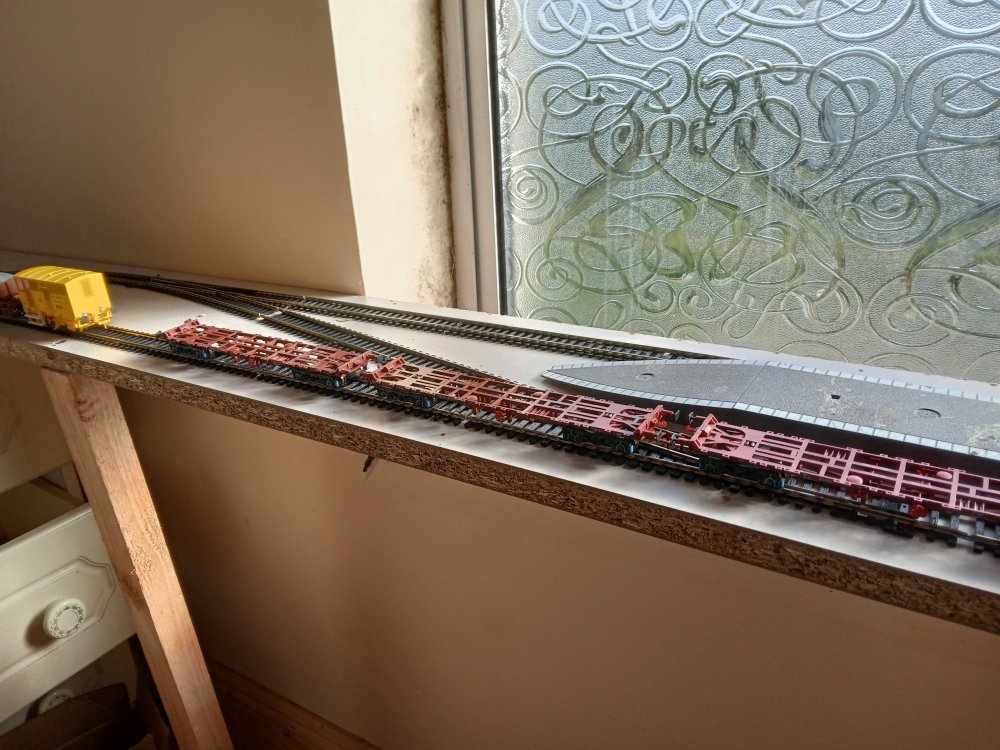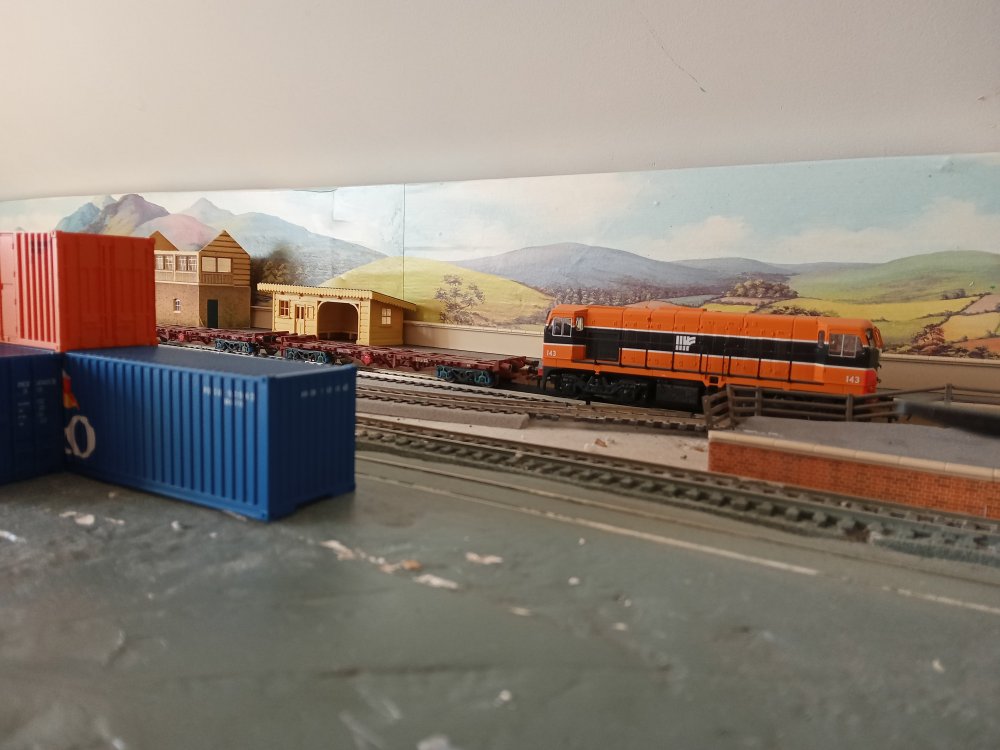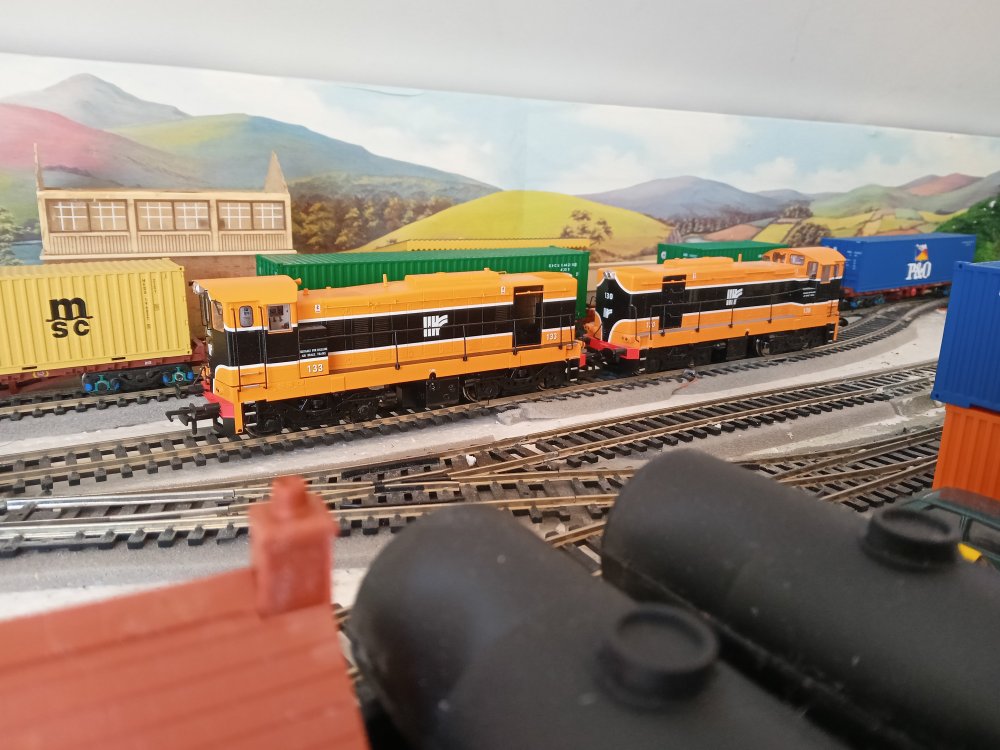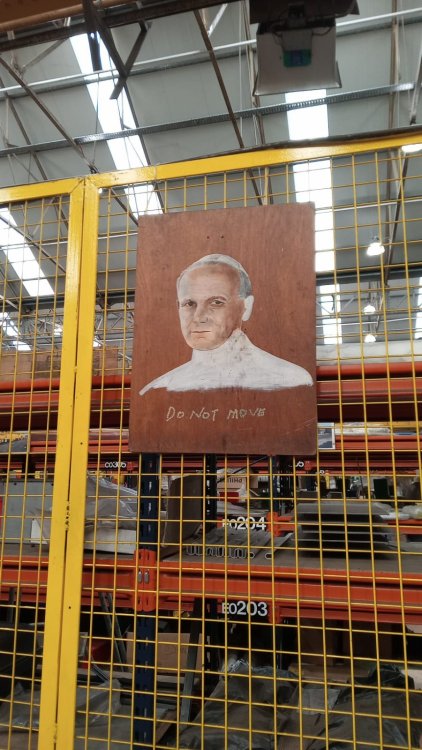
Sean
Members-
Posts
888 -
Joined
-
Last visited
-
Days Won
3
Content Type
Profiles
Forums
Events
Gallery
Everything posted by Sean
-
Oil would be at home.on many variety of different layouts
-
https://www.ebay.ie/itm/265693852925?mkcid=16&mkevt=1&mkrid=5282-175127-2357-0&ssspo=sqtpO07IQNe&sssrc=2349624&ssuid=jBYmkOuhTpK&var=&widget_ver=artemis&media=FB good man john paul
-
new year new layout 1990s container terminal and tmd
Sean replied to Sean's topic in Irish Model Layouts
Old track plan The 90's brought with it the demise of the turntable to allow for slightly longer trains. For my sanity. These points are being changed for all peco this week. The ones that are "loco only" are fine to stay as they are, but between loose springs and the deep well problem the standard hornbys have a mind if their own. -
R1 eh? suddenly i may have more space than i anticipated
-
-
That is actually brilliant and greatly reduces the amount of hunt or kadees that I have to buy, One last thing the Tara's are a bit shorter than the 42's right?
-
Oh damn they DO close couple. I'm sure I tried them a few months ago and they didn't and I was like wtf what are they for so. Now for the fun? Part.... Second radius curves, wagons are pulling around them without issue as the kinematic mechanism creates a little space between the buffers. Unfortunately this gap closes during push operations, such as into a siding and there's just a tiny bit of buffer lock that causes derailment. I think it's easily fixed if I slide the couplings back about 1mm out of the nem pocket and add a tiny dab of hot glue to secure with easy removal later. Might ruin the close look slightly but my goal here is better running so it's not a problem That's for tomorrow though. EDIT: that worked perfectly,no glue needed. im sure ill be able to tweak them to give me the best of both worlds tomorrow. EDIT2: just gave them a push with my hand around the most troublesome corners on the layout and the difference is phenomenol, they are sticking to the rails now! They are on my maybe list for before they all vanish so this info helps
-
sweet ill be giving them a go tomorrow, fixed rakes with tension locks on the ends until i can afford hunts or some other such nicetys. any chance they might come with the taras also? definitely doesnt help that my trackwork is somthing like this.........
-
I'm really not a fan of the modern tension locks that come as standard on most stock so I've been thinking about alternatives for a while. What exactly is the purpose of the coupling bars that are included with the flat wagons? Are they there for improved running on poorer trackwork or are they a prototypical thing for more realistic running? Regards Sean
-
is it possible to get on in portarlington? nothing boils my piss more than "match people" on match day muddling around the place in utter confusion as to how just about anything works as they experience the big smoke for the very first (and probabaly only) time! like when clarkson sends caleb to london just for the craic.
-
new year new layout 1990s container terminal and tmd
Sean replied to Sean's topic in Irish Model Layouts
Trusty hyster on loading duty GoPro found and charging. Video quality about to improve tenfold over this potato phone -
new year new layout 1990s container terminal and tmd
Sean replied to Sean's topic in Irish Model Layouts
All of the containers must be removed from the layout in order to facilitate further modelling works.. A decision was made to move all of these containers by rail. It will comprise of approximately four train loads. Due to space constraints the train must stop at the newly under construction slaney junction station and shunt into the siding to drop off one of the flats. This is okay though as it will be needed later on in the job. VID20220514184141.mp4 Arrival at slaney lake. Ready to run around and shunt in, but not before the driver takes a well deserved tea break. -
new year new layout 1990s container terminal and tmd
Sean replied to Sean's topic in Irish Model Layouts
funny that, a few of the reviews ive read on these criticise them for being a little squeaky, to me the timbre of the squeak adds to the authenticity as its just like a scaled down representation of the real sound. -
new year new layout 1990s container terminal and tmd
Sean replied to Sean's topic in Irish Model Layouts
VID_20220513170820.mp4 143 passes on its way to a ballasting job 130 and 133 are on liner duty VID_20220513172408.mp4 Coupling up, cuts short as the cameraman has to change his tape at the worst of moments. VID_20220513173735.mp4 Departing and powering through the curve. plan is to do some more modelling to the terminus over the weekend. Track plan has changed again lol delaying ballast till the very end has been wise indeed. -
new year new layout 1990s container terminal and tmd
Sean replied to Sean's topic in Irish Model Layouts
Probably, although I'll wait till I need to make a bigger order. Siding isn't final either. few sets of points left over that i need to do somthing with. VID_20220512224429.mp4 One of the more straight forward things I've put together the auto reverser is in action. the terminus is isolated and wired through a dual channel relay module which triggers from a hall sensor wired into the feed, as soon as a train enters the section and creates a short. The switch happens fast enough not to be noticeable by the loco which carries on as normal.. now trains can enter the terminus travelling in either direction. You can hear the relay flipping polarity in the video as the train enters and leaves with incorrect polarity -
@MOGULstill here. Infact I have more now! Rarely check in here but let me know if you are still interested.
-
we got a categoric no about a baby GM but little was mentioned about the big boy during that discussion hmm a DMU, maybe thats why we didnt get southern MK2 liveries this time around.. I wouldnt say no to a tokyu or alstom unit in fairness........ they were around long enough to merit interest across many eras and im dying for some toothpaste coaches, although i think they are coming sooner or later c'mon give us a hint. Ballast B sold out last night
-
two of my uncles are into model trains and have decent sized loft layouts full of hornby, doubtful that either of them have even heard of MM or IRM........
-
I believe at some point in the uk it was normal to keep locos idling 24/7 for the above stated reasons, along with grumblings about the batteries not being too good in the cold weather. i remember being on a GAA special as a child, one of my only loco hauled train trips in Ireland before everything went DMU unfortunately. we were at the back of the train and when it got into the station there was a few more coaches than the lenght of the platform would allow. so everyone in the back coaches simply hopped out and started walking along the trackbed towards the platform! wouldnt see that now lol.
-
-
-
Ill tell you one thing, I had this livery written off as an ugly weird looking and bland shade that looked like it had been delivered to the wrong continent when combined with the yellow from any photos i had seen and because of that i never really had any ambitions to buy the model. after seeing this in the flesh today i am strongly considering the model as it has changed my opinion on it entirely.
.png.c363cdf5c3fb7955cd92a55eb6dbbae0.png)


